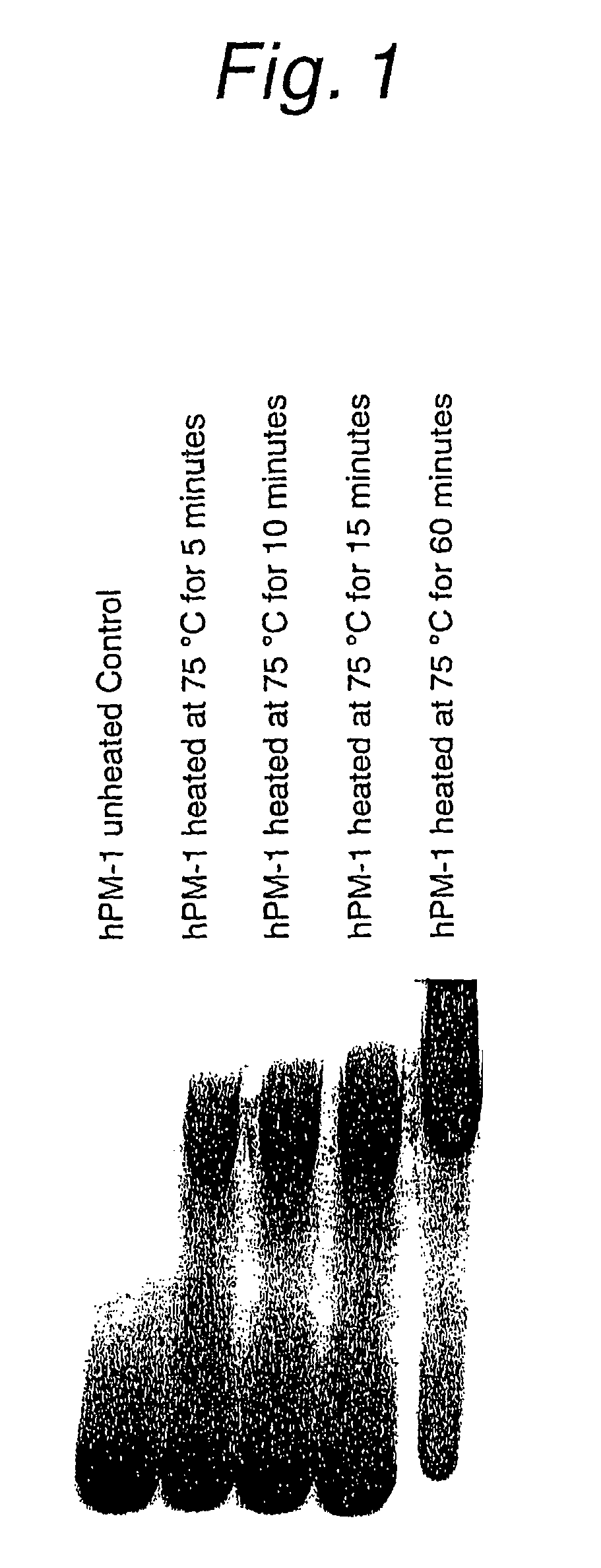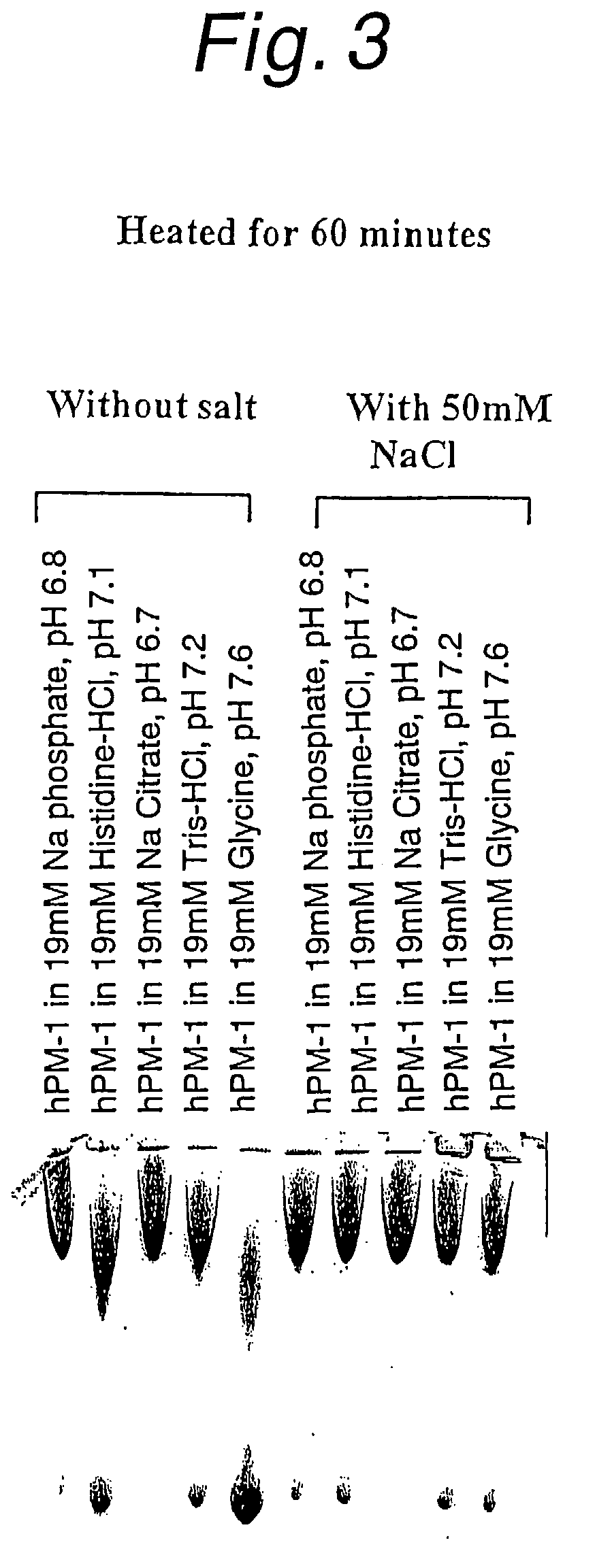Stabilized anti-interleukin-6 antibody-containing preparations
a technology of anti-interleukin-6 and preparation, which is applied in the field of anti-interleukin-6 preparation, can solve the problems of deterioration of antibodies such as immunoglobulins, unstable antibodies such as monoclonal antibodies and humanized antibodies, so as to reduce aggregation and increase the stabilization effect.
- Summary
- Abstract
- Description
- Claims
- Application Information
AI Technical Summary
Benefits of technology
Problems solved by technology
Method used
Image
Examples
example 1
Heat Stability of Antibody hPM-1
[0114]Antibody hPM-1 dissolved in 19 mM sodium phosphate, 0.2 M NaCl, pH 6.5 was tested for heat stability. FIG. 1 shows the results of native gel electrophoresis before and after heat treatment at 75° C. for 5-60 minutes.
[0115]In FIG. 1, a single band appears before heat treatment to show that the purified protein is very homogeneous in charge state and size. Sedimentation velocity of the same sample was constant to show it is a monomer species. After heating at 75° C. for 5 minutes, a band corresponding to aggregates was observed. As the incubation period increased, the intensity of the aggregate band increased and the monomer content was almost lost after 60 minutes. These aggregates seemed to be non-covalent because they dissociated in the presence of sodium dodecyl sulfate.
example 2
Effect of the Type of Buffer on Aggregation
[0116]Five buffers (all 19 mM) were used to examine their effect on aggregation. The pHs of samples prepared by dissolving an antibody hPM-1 preparation in these buffers (at a concentration of about 1 mg / ml) are as follows.
[0117]1) sodium phosphate (pH 6.8)
[0118]2) histidine-HCl (pH 7.1)
[0119]3) sodium citrate (pH 6.7)
[0120]4) Tris-HCl (pH 7.2)
[0121]5) glycine (pH 7.6).
[0122]These samples were heated at 75° C. for 60 minutes and subjected to native gel analysis. FIG. 2 shows the results before and after heating. The monomer content was the highest to give the smallest amount of aggregation in glycine and it decreased in the order of histidine-HCl, Tris-HCl, sodium phosphate and sodium citrate. Very few aggregates were observed in glycine.
[0123]When 50 mM NaCl was added to these buffers, aggregation after heating greatly increased in any buffers (FIG. 3).
example 3
Effect of the Type of Buffer on Sedimentation Distribution
[0124]In order to examine the nature of heat-induced aggregation in these buffers, a sedimentation test was then performed. FIG. 4 shows the sedimentation coefficient distribution g(s*) obtained from the dc / dt analysis of a control antibody hPM-1 in 19 mM sodium phosphate, 0.2 M NaCl. This sample is shown to be a single species having a sedimentation coefficient of about 6.2 svedbergs (S). FIG. 5 shows the sedimentation profile of an antibody hPM-1-containing preparation sample dissolved in five buffers shown in Example 2 and heated at 75° C. for 60 minutes. Considerable aggregation and monomer species loss were observed in the other buffers than 19 mM glycine, pH 7.6. Monomer loss was the greatest in sodium citrate, followed by sodium phosphate, Tris-HCl, histidine-HCl and glycine in descending order. Broad distribution representing the existence of aggregates was observed in phosphate, citrate and Tris, which extended to 40...
PUM
| Property | Measurement | Unit |
|---|---|---|
| Molar density | aaaaa | aaaaa |
| Molar density | aaaaa | aaaaa |
| Temperature | aaaaa | aaaaa |
Abstract
Description
Claims
Application Information
 Login to View More
Login to View More - R&D
- Intellectual Property
- Life Sciences
- Materials
- Tech Scout
- Unparalleled Data Quality
- Higher Quality Content
- 60% Fewer Hallucinations
Browse by: Latest US Patents, China's latest patents, Technical Efficacy Thesaurus, Application Domain, Technology Topic, Popular Technical Reports.
© 2025 PatSnap. All rights reserved.Legal|Privacy policy|Modern Slavery Act Transparency Statement|Sitemap|About US| Contact US: help@patsnap.com



